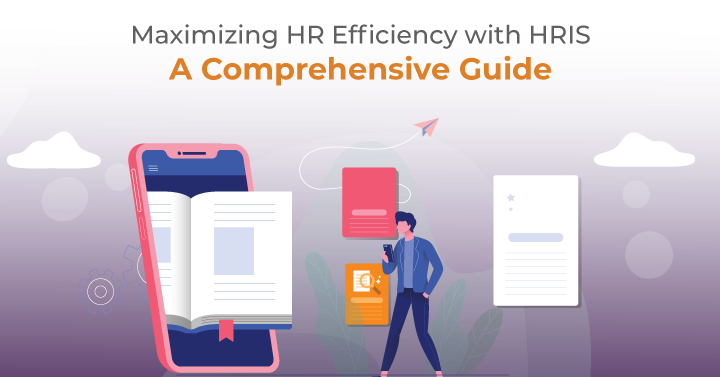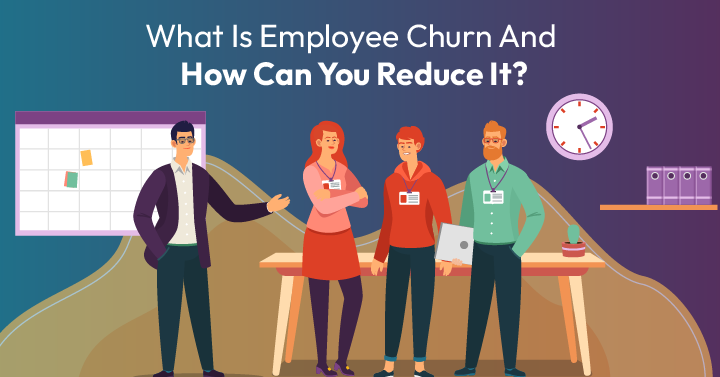1. What Is a Human Resource Information System (HRIS)?
A Human Resource Information System (HRIS) is a piece of software that helps companies store and manage employee data. At its most basic, it is a repository of staff information, giving HR teams a single, centralized database where they can view such details as company demographics, hours worked, leave taken, job roles and salary.2. What are the functions of Human Resources Information System (HRIS)?
A human resource information system (HRIS) perform a number of vital functions related to core HR, in particular employee information management. Beyond storing basic data, more comprehensive systems can incorporate an applicant tracking system (ATS) to aid recruitment, a performance appraisals interface to oversee employee reviews, and facets of a learning management system (LMS), such as monitoring training and development. Human Resources Information System (HRIS) can also help human resources teams process payroll and administer benefits.3. How Can Firms Benefit from Using Human Resources Information System (HRIS)?

3.1 Improved efficiency
An Human Resource Information System (HRIS) can be used to automate repetitive tasks related to things like onboarding, holiday requests or payroll processing. Rather than manually undertaking these actions every time, you can use an HRIS to set up standard operating procedures that are triggered whenever you, for example, hire a new individual.3.2 Better accuracy
Human Resource Information System (HRIS) automation reduces the chance of inaccuracies creeping into your operations. The fewer instances of manual data entry, the better for your company.3.3 Enhanced data management
A sophisticated HRIS allows you to do much more with the data you possess than Excel sheets. You can search and segment according to skills, experience and salary, depending on the kind of analysis you want to perform.3.4 Increased compliance
With an HRIS, you can easily stay on top of compliance-related issues. For instance, a lot of software features reminders and checklists regarding working hours and legally mandated benefits. These are designed to ensure you aren’t in breach of national regulations and can update you on changes to the law in real time.3.5 Improved decision-making
The ability to analyze data using your Human Resource Information System (HRIS) can help you make better decisions regarding things like recruitment and employee engagement. For instance, are there things you could do to improve staff retention?3.6 Enhanced employee experience
Many HRIS give employees direct access to their data. This makes it much easier for them to update their details and ensures they have greater control over the accuracy of their information.3.7 Time and cost savings
Improved efficiency and decision making means a reduction in the time staff have to dedicate to tasks that can be automated. The time can then be used to complete other duties, leading to cost savings.3.8 Improved communication and collaboration
An Human Resource Information System (HRIS) can improve communication and collaboration through in-built sharing tools. Since the system already stores data, it’s only a small further step to include methods of passing on key documents and spreadsheets.3.9 Greater strategic focus
When you have employee data gathered in one place, you can better make decisions regarding retention, productivity and company culture. An Human Resource Information System (HRIS) can help you focus your strategic approach.3.10 Better alignment with business goals
HRISs can be a useful method of assessing how well your staff are aligned with your business goals. Once again, the data storage aspect means you can build a clear picture of where employees could be better in tune with your mission objectives.4. Key Features of a Human Resources Information System (HRIS)

4.1 Employee information management
The primary importance of human resource information system (HRIS) setups is that they organize data. This data can be anything from birthdays and home addresses to a history of pay raises and skills development.4.2 Recruitment and hiring management
An HRIS is somewhere you can cache applications and resumes. Even if someone is not right for the current role you are hiring for, they may be a perfect fit for a future position. Some software can also help you screen candidates and perform background checks. Finally, an Human Resource Information System (HRIS) can help you analyze your recruitment procedures for weaknesses.4.3 Time and attendance management
Time and attendance programs track worked hours, sick leave and holiday requests. Through an Human Resource Information System (HRIS), you can digest data related to absenteeism and optimize staff-related costs.4.4 Benefits Administration
Managing employee benefits is often a time-consuming task for HR teams. HRISs can auto-enroll new staff in various benefit tiers according to their role and seniority, while also allowing staff access to an overview of their entitlements.4.5 Performance management
Some HRISs have staff appraisal features, allowing HR and line managers to examine performance over time. This can be useful in helping with goal alignment, staff performance comparisons and improvement targets.4.6 Training and development management
Several HRIS systems list training and development as part of their functions. This can be used to identify where skills training might lead to greater staff productivity and effectiveness.5. Types of Human Resources Information Systems (HRIS)
5.1 On-premise HRIS
There are two main types of human resource information system (HRIS) available on the market. The more traditional choice is the on-premise HRIS, which is stored on your company server. This option ensures your company has complete control over all information – but also means your company will be responsible for data security. An on-premise HRIS tends to require higher capital investment, since the outlay for the software and the required physical space to run the HRIS is greater.5.2 Cloud-based HRIS
Cloud-based HRIS, also known as software-as-a-service (SaaS) HRIS, is hosted on the HRIS company’s server and accessed by your business through the internet. Instead of a one-off upfront fee, a cloud-based HRIS is usually offered on a subscription-based model. Security of data is the responsibility of the HRIS company, which will also provide regular updates and patches to the software as part of the subscription deal. This type of HRIS tends to be highly scalable since you do not have to worry about increasing your processing power to meet growing demand.5.3 Hybrid HRIS
A hybrid HRIS approach combines aspects of both on-premise and cloud-based models. It may be that your company has invested significantly in legacy on-premise systems but wants some additional functionality that only a cloud-based service can offer. It is not uncommon for companies to want to maintain direct control of their data through an on-premise solution, while also desiring the regular updates of a cloud-based subscription HRIS.6. How to implement HRIS in your firm?
6.1 Define your objectives and requirements.
The first step of implementing a human resource information system (HRIS) project is to decide exactly what you hope to achieve and how an HRIS will help you meet these objectives. Are there specific pain points you want to resolve? What kind of return on investment can you expect to achieve by deploying an HRIS?6.2 Select an appropriate HRIS.
Do your research. There are lots of human resource information system (HRIS) examples on the market today, and the first step is to narrow down the options through some internet searches and consumer reviews. Once you have several alternatives to discuss, send out requests for proposals and organize software trials so that your team can explore the functionality and assess usability. Don’t forget to check the pricing for each HRIS as part of your research – there’s no point in exploring something that is beyond the scope of your budget.6.3 Prepare for implementation.
Implementation is often a difficult, drawn-out process, especially for larger companies. Ensure things go as smoothly as possible by creating a detailed roadmap. This will require comprehensive communication between your in-house team and the HRIS’s team, including discussions of necessary resources and a clear division of roles.6.4 Configure and customize the HRIS.
As the HRIS is being configured for your systems, don’t forget to assess the possibility of customizations. It’s much easier to install tailored features at this stage than once the initial implementation has been completed. Bear in mind that there may also be unforeseen adaptations that you need to make once the testing cycle begins. Arguably, the most important aspect of this stage is constant, clear communication between all stakeholders.6.5 Migrate data to the new system.
Once the system is in place and all the functionalities have been tested, it’s time to migrate your existing HR data to the new system. After all, you don’t want to lose the years of existing data you already have. Make sure everyone in the company is aware of the changes and the associated benefits – this will help make the difficult process of data migration more palatable to your staff.6.6 Train users and ensure adoption.
Once the old data has been migrated to your new HRIS, you can begin training your staff on how to use the software. Some people will probably already have utilized the principal features during the trial phase, but you should prepare a comprehensive plan for company-wide adoption. Make sure you create and store instructional documents on how to use the HRIS somewhere that all staff can access. This not only makes it easier to share the info with new hires, but it also means long-term staff can readily refresh their memories regarding utility and troubleshoot any basic issues.6.7 Monitor and evaluate the system's performance
During the initial adoption of a new HRIS, you will undoubtedly run into a few teething problems. Establish a robust feedback system so you can see how your staff are finding the new software and what drawbacks need to be addressed. Usually, all HRIS vendors will include a period when they will continue to provide support free of charge as part of the package.7. The Future of HRIS in the Business Landscape
HRIS tools continue to develop and advance. One of the most desirable future features is improved automation. Advances in artificial intelligence and machine learning mean HRISs will not only be able to offer more effective recruitment, onboarding and payroll pathways, but also suggest solutions to various HR challenges that arise.While staff are returning to offices following the COVID pandemic, it’s undeniable that there has been a paradigmatic shift in ways of working. HRISs are still adapting to how they optimize their services for remote workers in terms of hiring and managing employees.Tied into an increase in hybrid working and distributed teams, mobile-centric HRIS systems are becoming more common. Indeed, ‘mobile first’ has been a buzz phrase for quite some time now, but it’s now heavily filtering through into software development.8.FAQs
- What is HRIS and its benefits?
- What are the three components of HRIS?
 Interested in Virtual Team Building Events?
Interested in Virtual Team Building Events?





















